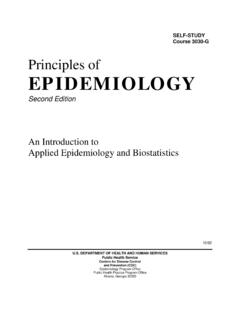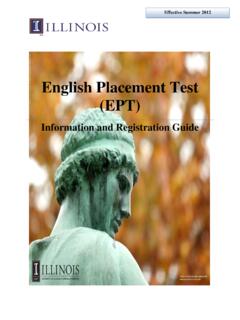Transcription of Write our ne ere - Edexcel
1 Write your name here Surname Other names Centre Number Candidate Number Pearson Edexcel GCSE (9 1). History Paper 3: Modern depth study Option 31: Weimar and Nazi Germany, 1918 39. Tuesday 12 June 2018 Afternoon Paper Reference Time: 1 hour 20 minutes 1HI0/31. You must have: Total Marks Sources/Interpretations Booklet (enclosed). Instructions Use black ink or ball-point pen. centrethe Fill in boxes at the top of this page with your name, number and candidate number. Answer all questions in Sections A and B. Answer the questions in the spaces provided there may be more space than you need. Information The total mark for this paper is 52. Theusemarks for each question are shown in brackets this as a guide as to how much time to spend on each question. terminologyavailable The marks for spelling, punctuation, grammar and use of specialist are clearly indicated. Advice Read each question carefully before you start to answer it. Try to answer every question.
2 Your answers if you have time at the end. Check Turn over *P56276A0116*. P56276A. 2018 Pearson Education Ltd. 1/1/1. SECTION A. Answer both questions. Study Source A below and then answer Question 1. Source A: From Berlin Diary by William L Shirer. Shirer was an american journalist living in Berlin at the time of the Olympic Games. He wrote this diary entry in August 1936. The Olympic Games finally came to an end today. Hitler and the others showed up this afternoon for the final ceremony, which continued until well after dark. The Nazis have succeeded with their propaganda. First, the Nazis have run the games on an extravagant scale never before experienced, and this has appealed to the athletes. Second, the Nazis have put on a good show for the general visitors, especially those who are big businessmen. 2. *P56276A0216*. 1 Give two things you can infer from Source A about the success of the Berlin Olympic Games in 1936. Complete the table below to explain your answer.
3 (i) What I can infer: .. Details in the source that tell me this: .. (ii) What I can infer: .. Details in the source that tell me this: .. (Total for Question 1 = 4 marks). *P56276A0316*. 3. Turn over 2 Explain why the Nazis were able to reduce unemployment in Germany in the years 1933-39. (12). You may use the following in your answer: rearmament autobahns You must also use information of your own.. 4. *P56276A0416*.. *P56276A0516*. 5. Turn over .. (Total for Question 2 = 12 marks). TOTAL FOR SECTION A = 16 MARKS. 6. *P56276A0616*. SECTION B. For this section, you will need to use the sources and interpretations in the Sources/Interpretations Booklet. 3 (a) Study Sources B and C. How useful are Sources B and C for an enquiry into the challenges facing the Weimar Republic in the years 1919-23? Explain your answer, using Sources B and C and your knowledge of the historical context. (8).. *P56276A0716*. 7. Turn over .. 8. *P56276A0816*. (b) Study Interpretations 1 and 2.
4 They give different views about the challenges facing the Weimar Republic in the years 1919-23. What is the main difference between these views? Explain your answer, using details from both interpretations. (4).. *P56276A0916*. 9. Turn over (c) Suggest one reason why Interpretations 1 and 2 give different views about the challenges facing the Weimar Republic in the years 1919-23. You may use Sources B and C to help explain your answer. (4).. 10. *P56276A01016*. Spelling, punctuation, grammar and use of specialist terminology will be assessed in part (d). (d) How far do you agree with Interpretation 2 about the challenges facing the Weimar Republic in the years 1919-23? Explain your answer, using both interpretations and your knowledge of the historical context. (16).. *P56276A01116*. 11. Turn over .. 12. *P56276A01216*.. *P56276A01316*. 13. Turn over .. (Total for spelling, punctuation, grammar and use of specialist terminology = 4 marks). (Total for Question 3 = 36 marks).
5 TOTAL FOR SECTION B = 36 MARKS. TOTAL FOR PAPER = 52 MARKS. 14. *P56276A01416*. BLANK PAGE. *P56276A01516*. 15. BLANK PAGE. Acknowledgements Every effort has been made to contact copyright holders to obtain their permission for the use of copyright material. Pearson Education Ltd. will, if notified, be happy to rectify any errors or omissions and include any such rectifications in future editions. 16. *P56276A01616*. Pearson Edexcel GCSE (9 1). History Paper 3: Modern depth study Option 31: Weimar and Nazi Germany, 1918 39. Tuesday 12 June 2018 Afternoon Paper Reference Sources/Interpretations Booklet 1HI0/31. Do not return this booklet with the question paper. Turn over *P56276A*. P56276A. 2018 Pearson Education Ltd. 1/1/1. Sources/interpretations for use with Section B. Source B: A photograph published in a German newspaper in March 1920. It shows Freikorps soldiers taking part in the Kapp Putsch. The soldiers are occupying an area in Berlin near to the Reichstag building.
6 Source C: F rom an interview with a German woman in 1974. She was a factory worker during the early years of the Weimar Republic. Here she is recalling the hyperinflation of 1923. You got paid at the end of every day. You had to spend it straight away because the next day your wages would only be worth half as much as the day before. Money was literally not worth the paper it was printed on. Many people who had their savings in bank accounts lost all the money they had managed to scrape together. We asked ourselves, How can that happen? How is it that the government can't control this inflation which wipes out the life savings of most people?' We never got an answer that meant anything. After the hyperinflation, people didn't trust the government anymore. 2. P56276A. Interpretation 1: From The Weimar Republic, 1918-24 by M. Rathbone, published in 2013. Some democratic parties did support the Weimar Republic. However, powerful political groups on both the Left and the Right refused to accept the existence of the Weimar Republic.
7 They were prepared to destroy it by force and replace it with their own form of government. They took action against the Republic very soon after it was created. This made it difficult for the new government to maintain order and govern Germany. Interpretation 2: From Alpha History, a history website. The hyperinflation which happened in 1923 forced the Weimar government to fear for its own existence. After the French had occupied the Ruhr, the industrial workers had gone on strike. The Weimar government supported the strikers by printing more paper money in order to pay them. As the strike continued, the government could not find a solution and simply printed even more money. This ruined the economy. People talked openly about removing the government by a popular revolution or a military putsch. 3. P56276A. BLANK PAGE. Acknowledgements Every effort has been made to contact copyright holders to obtain their permission for the use of copyright material.
8 Pearson Education Ltd. will, if notified, be happy to rectify any errors or omissions and include any such rectifications in future editions. 4. P56276A.












